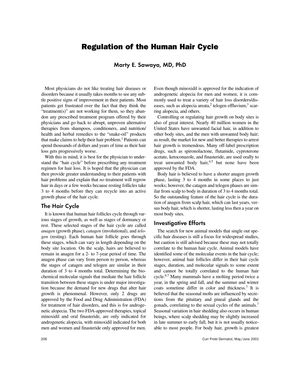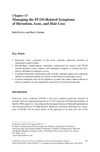Regulation of the Human Hair Cycle
May 2001
in “
Current problems in dermatology
”

TLDR The conclusion is that effectively treating hair disorders is difficult due to the complex factors affecting hair growth and more research is needed to improve treatments.
In May 2001, Marty E. Sawaya's document outlined the complexity of the human hair cycle, including its growth, involutional, and resting phases, and the challenges in treating hair disorders. At that time, only minoxidil and finasteride were FDA-approved for androgenetic alopecia, with other drugs being used off-label. The paper stressed the importance of understanding the hair cycle for effective treatment, noting that hair regrowth is a slow process and that many factors, including growth factors, cytokines, hormones, stress, and neuropeptides, can influence the hair cycle. It also discussed the role of the hair follicle "buldge," calcium, phosphate, and vitamin D derivatives in hair growth regulation. The conclusion highlighted the difficulty in controlling the hair cycle due to numerous influencing factors and the need for further research to improve treatments for hair disorders.









